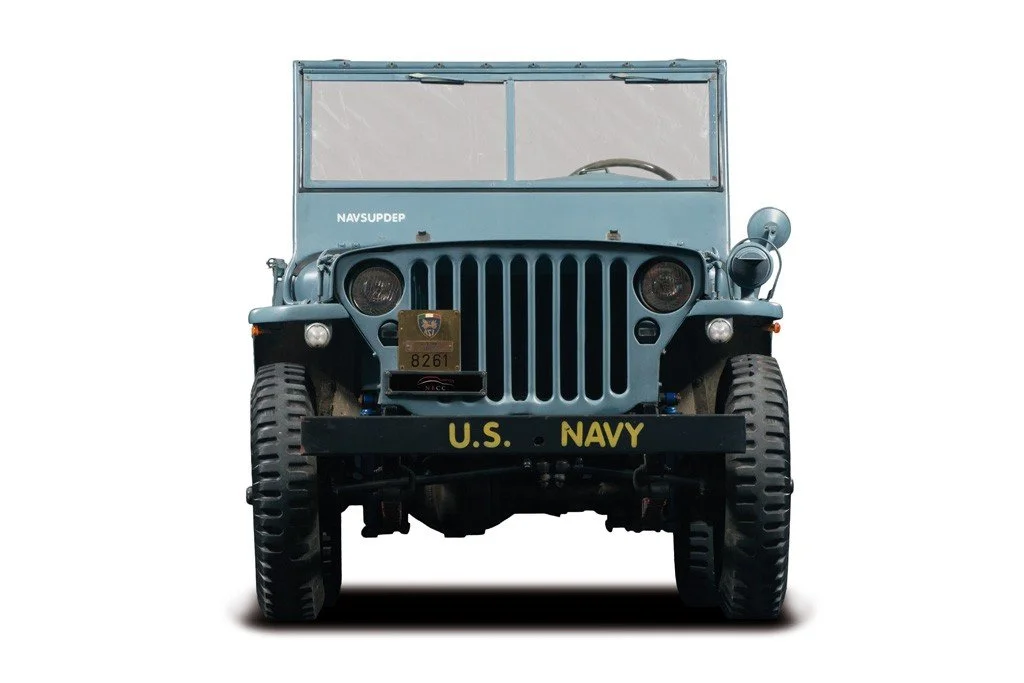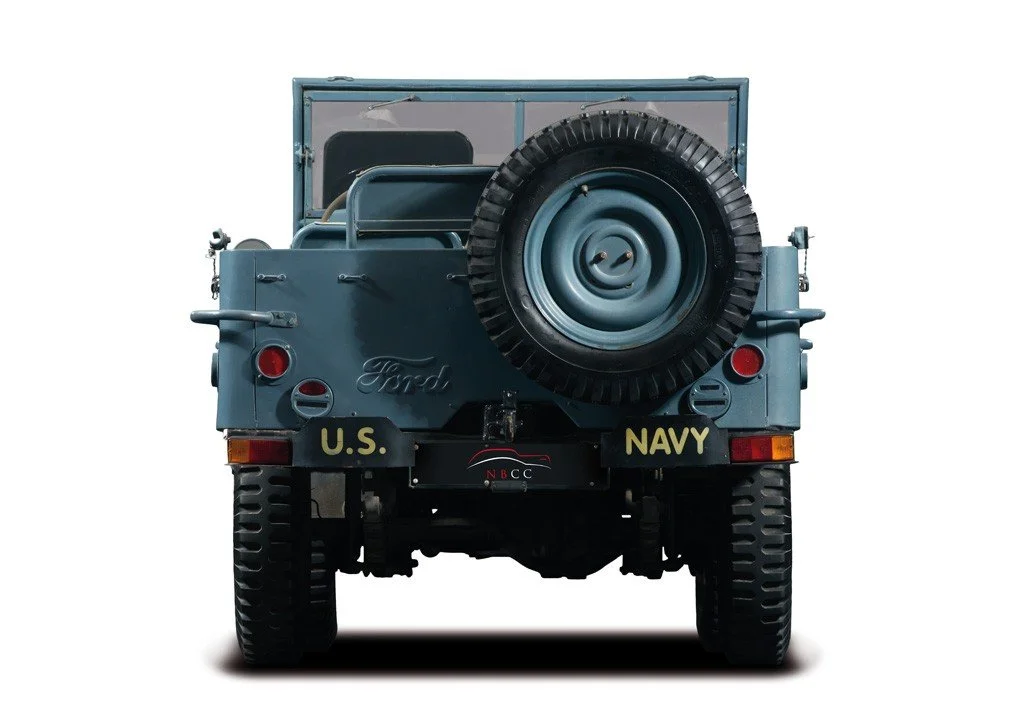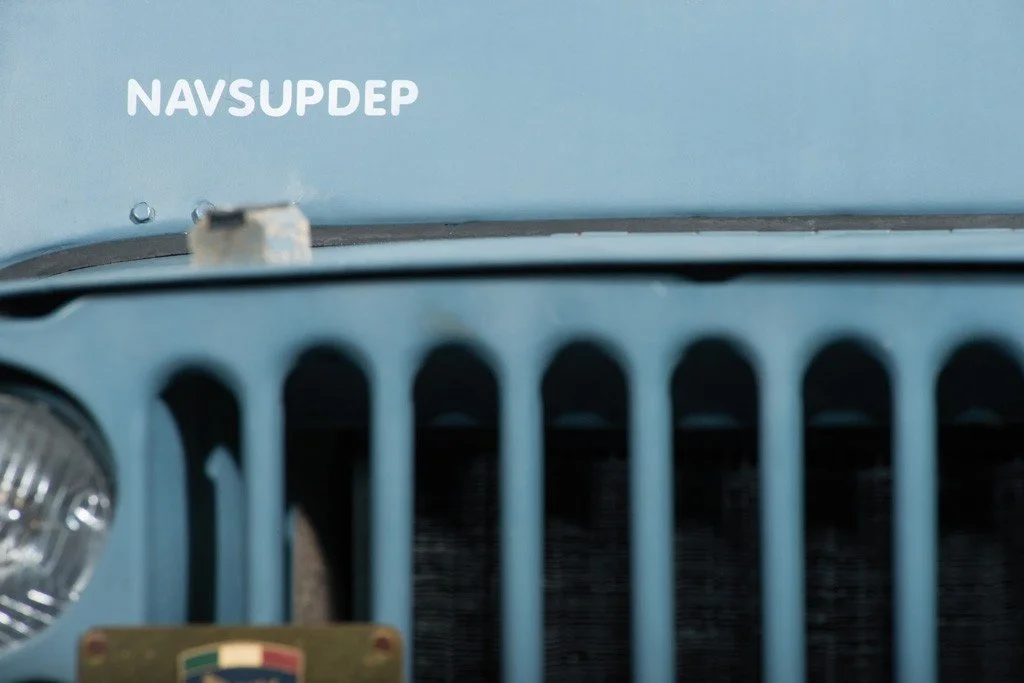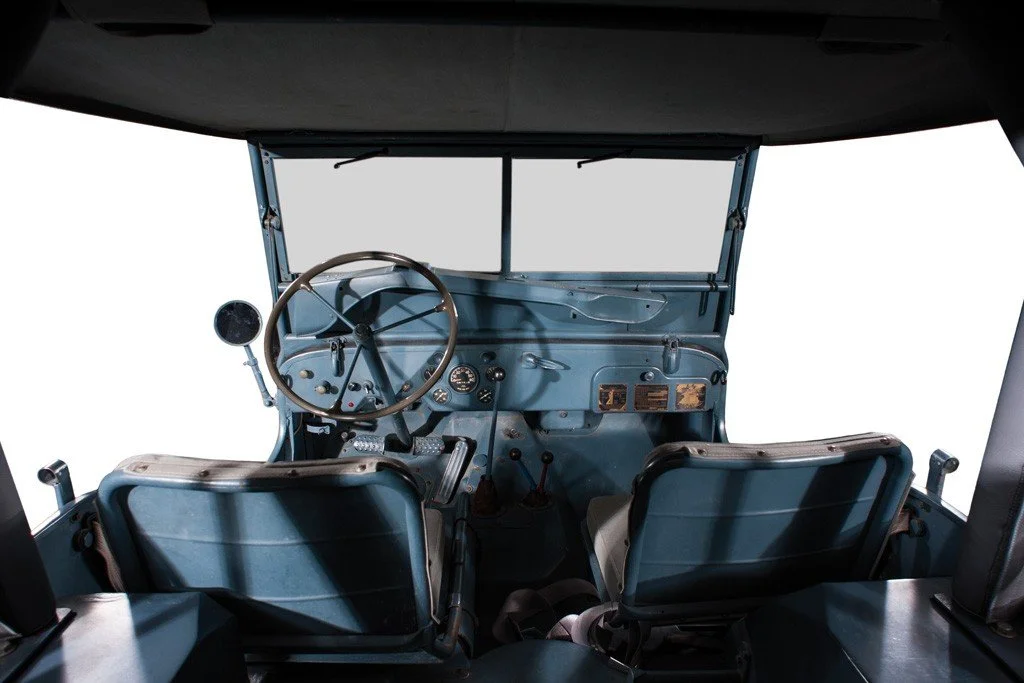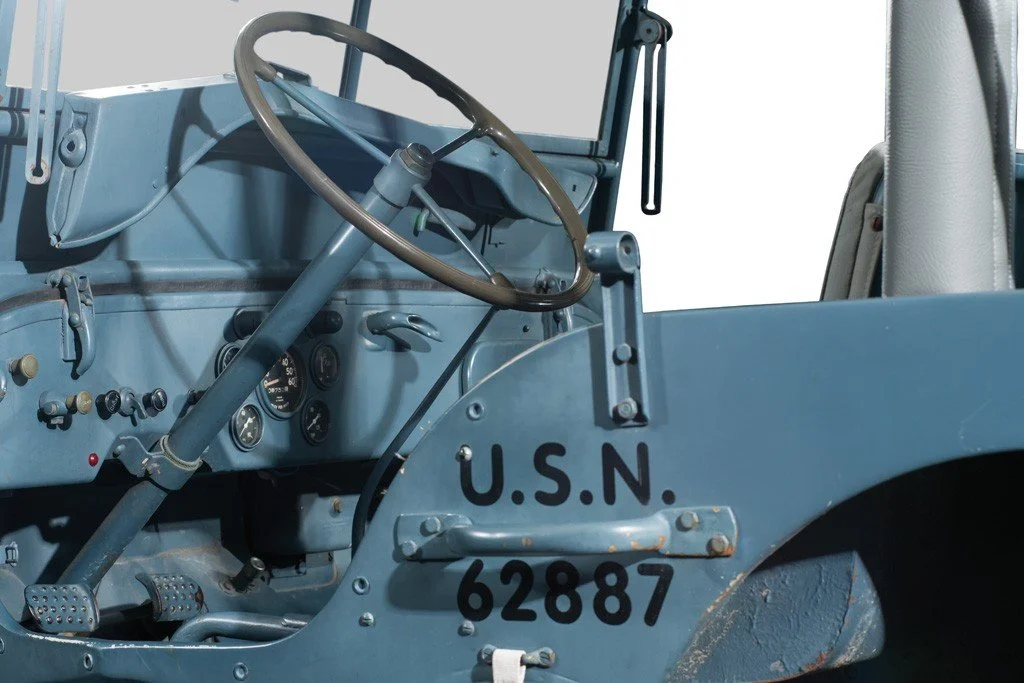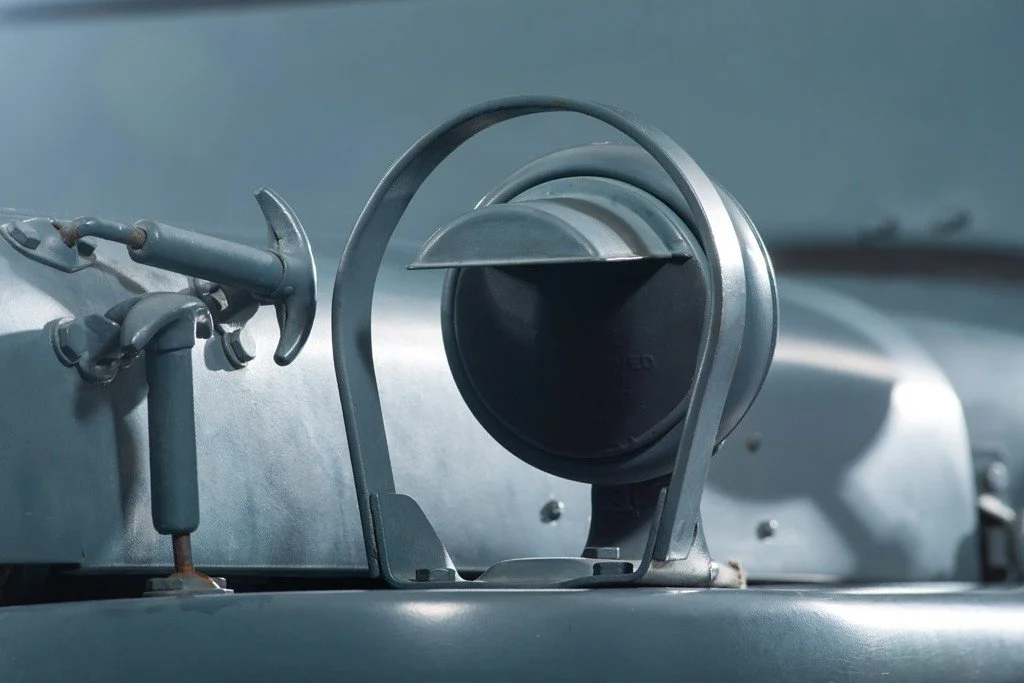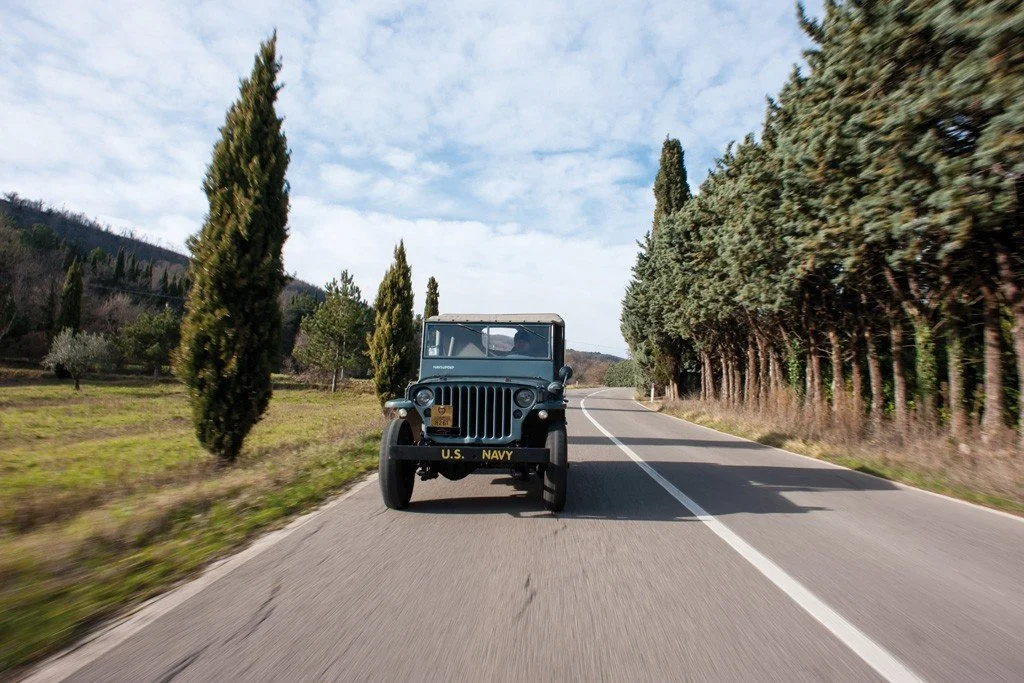-
This testament to the Second World War is a Ford GPW (Willys design) model G503, assembled in 1942 and one of the first to be built after the US government mandate following the commission from the military department.
The GPW Navy models (typically in light blue) were those Jeeps generally not destined for the front but used in service on the American military bases (also abroad) and above all issued to the coastguard units.
This GPW had been in Italy for a long time, but only joined the Nicola Bulgari Collection in April 2013. The Jeep had already been completely restored by professional specialists some years before and in January 1995 it received the gold license plate recognized by ASI (Italian historic automobile register). This GPW has retained all of its original features together with its “Navy” color for the body and interior. Without a doubt it is an important piece of American automobile history from the period when civil production was suspended. -
Company
Ford Motor Co.Wheelbase
80inInterior trim
NavyBrakes
front and rear drumsMake
FordLength
131inEngine
Go Devil L4 - 134cidTires
5.50x16Model
GPW G503Width
62inCarburetor
1 Carter WO-539S one-barrelOriginal Price
$782Body style
open chassisWeight
2454lbsHorsepower
54.8hp @ 5000rpmProduction
277,878Model year
1942Exterior paint
NavyTransmission
manual 3-Speed with 2-Speed Transfer Case -
The Willys MB U.S. Army/Navy Jeep, along with the nearly identical Ford GPW, was manufactured from 1941 to 1945. In July, 1940, the U.S. Army distributed requirements for a utility vehicle that would be four-wheel drive, carry three people and have a wheelbase of up to 80”, feature a fold-down windshield and powered by an engine capable of at least 50 hp. It also had to have a minimum weight of 1,300 lbs. Only three companies entered the competition: American Bantam Car Company, Ford Motor Company and Willys-Overland Motors. Bantam won the bid but the government did not think the small company had the capacity to manufacture enough vehicles, so they contracted with Willys and Ford for production of the Jeep. Bantam built their BRC 40 until late 1941. Willys first produced the MA (for Model “A”) and Ford built the Jeep GP. By July, 1941, the government wanted to standardize the design, and chose the Willys model as the standard, mostly because of its powerful “Go Devil” engine, which the troops loved. The best features of the Bantam and Ford models were incorporated into the Willys version, which became the MB (Model “B”). Ford’s Jeep was named the GPW, with the “W” standing for the Willys design.
None of the three motor companies called their vehicle the “Jeep”. It is a name the vehicle acquired after its production. Some say it’s a phonetically slurred word from “GP” for general purpose. Others think the troops named it after a character in the Popeye cartoon series called “Eugene the Jeep”. Eugene was a jungle “Pet” of Popeye’s who was small, able to move between dimensions and could solve seemingly impossible problems. A dictionary of military slang from that era describes the word “jeep” as any small plane, helicopter or gadget”. Note that we call our 1942 Ford GTB the “Burma Jeep”.
The first 25,000 Jeeps that Willys produced had a welded flat iron “slat” radiator grille like ours. Ford came up with a stamped slotted steel grille for its cars, which was lighter and less expensive to produce. Along with many other designs innovated by Ford, the slotted grille was adapted by Willys and became the Jeep standard in April 1942. Some say fewer than 25 “slat grille” Jeeps survive.
During WWII, Willys produced 363,000 Jeeps and Ford some 280,000. Original cost to the Army was $649 per Jeep.
The main chassis or body component that distinguished a Willys-Overland MB from the Ford-built GPW is the tubular front frame cross-member on the MB as opposed to the inverted U-shaped cross-member on the GPW with a flat top. That cross-member is located behind the grille, at the base of the radiator.
A visible sign is that GPWs with Ford frames, unlike MBs or GPWs with Willys frames, had holes in the front bumper in line with the frame rails and also had holes in the rear cross-member just out from the bumperettes. Another small MB/GPW difference is in the lid of the rear fender tool boxes. The often replaced, factory original MB tool box lid is flat while the GPW has an embossed ridge and circle design.


